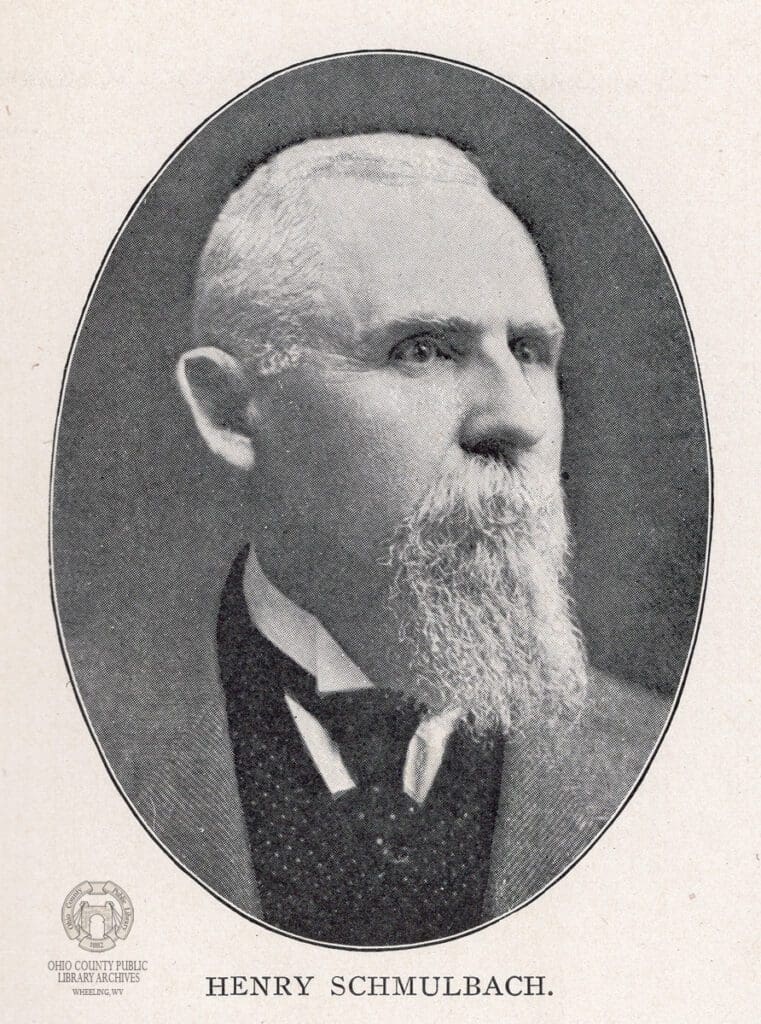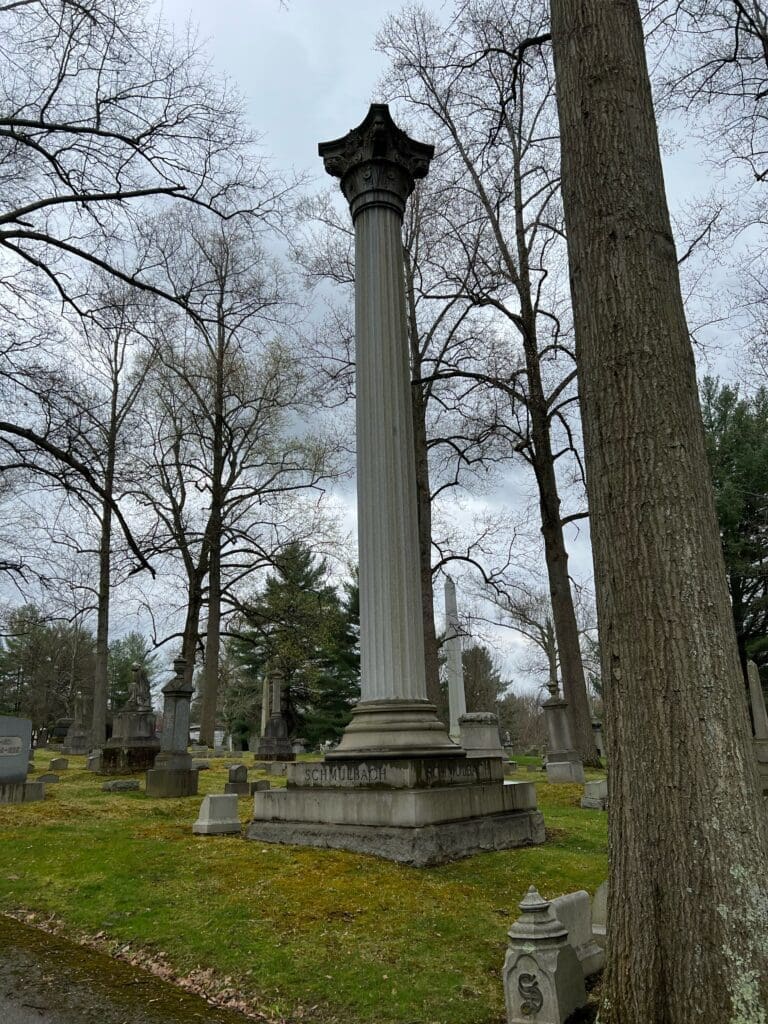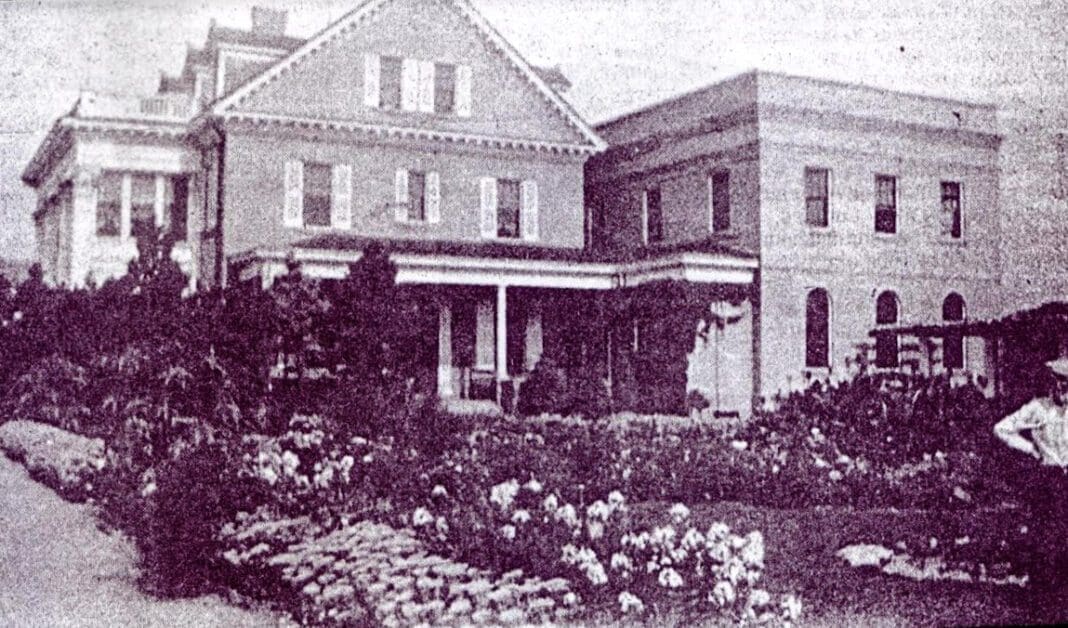(Publisher’s Note: This is the first of a two-part series on Henry Schmulbach, perhaps the greatest self-made entrepreneur in the history of the Upper Ohio Valley. The second part will publish tomorrow evening.)
The man was most well-known for his brewery that was housed in an impressive building in South Wheeling and churned out as many as 100,000 barrels of beer annually, including his signature ale, his stout, and his crown, but Henry Schmulbach was the first to accomplish many other feats, too, simply because he wanted to.
The German immigrant was moved by his parents to Wheeling as a child, and as soon as he could he began his working career in the retail grocery industry before transitioning into whole liquor sales as a teenager. Then, at 38 years old, Schmulbach purchased Nail City Brewery and almost immediately transformed it into a regional operation with distribution taking place through West Virginia, Ohio, and along the East Coast.
Before long, the success of the Schmulbach Brewery Company permitted him to own interest in steamboat, streetcar, telephone, and iron and nail companies, and he also opened Mozart Park, a recreational area with an incline ride that extended from the hilltop community to South Wheeling. The Wheeling area has not seen such a spectacle since. The entrepreneur also saved the German Bank of Wheeling in 1880, now known as Wesbanco Bank, and 25 years later funded the construction the Schmulbach Building between 1904-07, a 12-story structure recognized as the first skyscraper in the state of West Virginia.
“I think his character, his toughness, his work ethnic, and his vision that allowed him to see what was coming to make money was really impressive. He had a cement company, for example, and he established that because he saw that Wheeling would be booming,” said historian Ryan Stanton, a teacher at Wheeling Park High School who has completed the most research into the legendary businessman. “So, of course, he had the Leinman Cement Company and provided all of the concrete for what was the largest and most rapid growth the Wheeling area has ever realized in its history.
“He was known for treating his employees very well and that’s because he wanted everyone to be successful,” he said. “All of his businesses were very dangerous places to work in because all places were pretty dangerous because most owners didn’t take the precautions like he did. Henry paid his people well and wanted them to thrive, but he wanted them to be protected as much as possible, too. To me, that speaks volumes.”

Wishes and Whims
During his prime, Schmulbach’s wealth was rapidly growing and that allowed for the successful businessman to begin enjoying the finer things no matter where they were produced in the world. A favorite of his were the most unique automobiles he’d purchased and imported, and he also fancied horses.
In order to own several breeds, he discovered and purchased more than 200 acres of land that sat above the Stone Tavern, an inn that opened soon after National Road was surveyed in 1806 to allow passage through Ohio County. Known as the Heimberger House, it was a stopping place for pioneers searching opportunities in the west of a growing United States.
“Schmulbach’s development of his Roney’s Point property all started because of his love for horses. He became really involved with horses racing, but he treated his own horses as his pets,” Stanton explained. “If you drive up to this property today, there is a well pad where he once had a long barn that he constructed for his horses, and most of that part of property was on the east side and is closest to U.S. Route 40. He had caretakers living in the long barn to maintain the area he used for those horses during the early 1900s.
“He always had plans to build the mansion and the other structures on this property, but initially he purchased about 250 acres for the horses and that was it for a while,” the local historian recalled. “And then, he started with the mansion, and I think the house really was just a part of Schmulbach’s flare and his style, and because, later in his life, he started acquiring a lot of other hobbies. One of them was growing exotic plants and he knew he could do that at his home in Center Wheeling no matter how grand the Victorian home (2311 Chapline Street) was and still is today.”

Trees Perfectly Aligned
Today the roadway is named County Farm Road and it leads to the decaying remnants of the former Roney’s Point Hospital, a building that first cared for Ohio County’s highly contagious tuberculosis patients, and then the area’s mentally ill.
Behind that sprawling one-story structure rests a small neighborhood of eight homes, and before the hospital rests the vestiges of what once was Henry’s Schulbach’s innovative mansion and compound. County Farm Road once was only the brewer’s driveway and it was line by perfectly placed and spaced maple trees, most of which were removed more than a decade ago by employees of Chesapeake Energy to widen the roadway for the large water, drilling, and fracking trucks.
“I know when the mansion was completed around 1911, there were 11 different structures he had built on his property at Roney’s Point that were burned down in the 1970s for training by the Valley Grove and Triadelphia volunteer fire departments, but I believe there was a hand full of others,” Stanton reported. “One of the buildings Schmulbach had was an ice plant because his mansion was the first in Ohio County with some form of air conditioning. They would make the ice and put in areas of the basement, and apparently they had fans down there that would push the cool air up to the floors above.
“I have worked with former Ohio County deputy Harry Croft because he lived up there back in the 1950s,” he said. “One day we were working together on an auction and I told him about my interest in Roney’s Point and Henry Schmulbach and he grabbed a piece of paper and drew this map of all the buildings he remembers from living up here and working up there. Most of what he drew, though, isn’t standing anymore because of the fires and because of the decay that’s taken place over time.”

A Banker’s Bankroll
Stanton has come to acquire a plethora of Schmulback artifacts during his years of extensive research, and he has become well known for his interest in the storied businessman. In fact, following a presentation he made on the brewer/banker at the Ohio County Public Library, a couple approached him with a box of belongings once owned by Henry Schmulbach.
One article was a bank book.
“They just approached me and said they thought I should have what was in the box because they understood I was the person looking for anything connected to Schmulbach and his history,” he recalled. “When I looked inside, it was numbered as one of several at the same bank, and since I’ve been able to collect several more of them from most of the other banks in the Wheeling area.
“And there were a lot of banks in Wheeling, and in one of them had thousands upon thousands of dollars in them, and that didn’t include what he had invested in his own bank, the German Bank of Wheeling,” Stanton continued. “I’m really sure there are many more of the bank books out there, probably in other boxes packed away somewhere in attics and basements in the area, but based on what I see in the ones I have, he had to be the wealthiest man in the Ohio Valley if not in the entire country. Based on his house in Center Wheeling, the materials used for the mansion, and all of his different businesses, money by far was never an issue for Henry Schmulbach.”
But how rich was he say, perhaps, in today’s dollars?
“Was he as wealthy as say an Elon Musk is today? Oh yeah, he sure was. For his time? Without a doubt. We’re talking about as multi-millionaire and that was something that just didn’t exist not only around here but anywhere at that time in the history of the United States,” Stanton insisted. “The man had anything he wanted, and if you look at all of his properties and his assets, you just know that to be true. And he was a philanthropist, too, so he didn’t keep all of his money to himself.
“He may have had the reputation of being a gambler and something of a rough character, but he also cared about his community. Henry never forgot where he came from, and I think that’s something that needs to be recognized and retold for the people of today,” he explained. “I believe some people from today could likely learn a lot from the life Henry Schmulbach and how he went about things the right way.”








